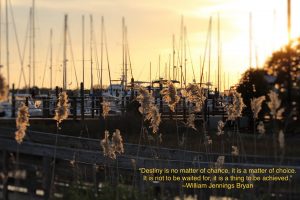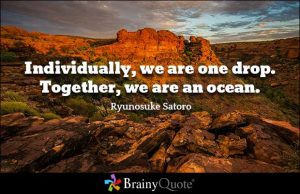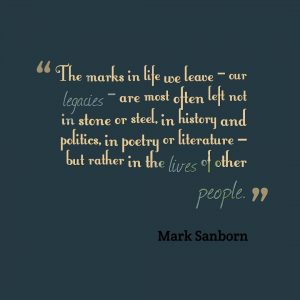Chinese Philosopher Lao Tzu said, “the journey of a thousand miles begins with a single step.” Yesterday was an important day in my life and the culmination of a life-long dream and a life-changing journey that certainly felt like it took a thousand miles. Yesterday, I earned my Doctorate in Higher Education Administration from Northeastern University.
My journey began in Fall 2014 with a single step. I confess that, at my age, (I was 52 years old when I took that step), walking into that first class in Charlotte at our weekend intensive was more than a little scary. I worried about being “too old”. . . I worried I wasn’t “smart enough” . . . I worried I would not be able to keep the pace of the combination of a full-time job and a two-class per term doctoral program . . . I “worried” about a lot of things, but I took the step anyway.
Last night, I spent a great deal of time reflecting on my accomplishment and thinking about my journey, which along the way felt as if it would never end, yet now feels like it began just yesterday. As I reflected on the past 3 ½ years, I couldn’t help but think about the students from my thesis — the eight incredible men and women with eight incredible stories who took the time to share their experiences with me. My study explored persistence among successful low-income community college students in North Carolina. The ultimate goal of my research was connected to my life’s passion for sharing the power of education to change lives. I aimed to understand the experiences of low-income community college students, in hopes that their experiences could inform how community college practitioners, like me, might be able to build better support systems to help our students overcome obstacles to successfully complete their educational journeys.
My students faced so many barriers and challenges. Almost all of them had to work, often full-time, while attending school and they had children and husbands or wives, or sometimes even fathers or mothers to take care of while they worked and attended school. Three of the students faced serious health issues and three of them were finishing school while their fathers or mothers were dealing with terminal illnesses. Additionally, the students were all low-income students, so going to college presented a financial challenge as well. Yet, every one of these amazing men and women persevered. They set a goal; they developed a plan; they took that first step . . . And they kept going until they had traversed those thousand miles and completed their goal.
Yes, every one of those students had help along the way. They had a supportive family, peers, and college faculty and staff. They received financial aid to help them pay for tuition and books. But the most remarkable finding from my study was that, what they had more than anything else, was self-motivation and self-determination. It began with a dream to create a better life for themselves and their families, and their inherent motivation and determination to follow their dream was a dominant factor of their success. Just like me, the students in my study had a dream, and they found a way to achieve their dream. Most of them didn’t start out with a plan in place — but they quickly developed a plan, either through their own initiative or with the help of their support system. In the end, every one of those students overcame substantial barriers and quite honestly, beat the odds, to reach their destination and walk across the stage at our college’s graduation ceremony. And it all began with that single step.
My students are important to me. Not only because they helped me achieve my life-long dream, but because we are kindred spirits, since a long time ago, I was one of them. I was that low-income student who had a dream but also had a lot of obstacles standing between me and that dream. I know how hard it is when it seems like the deck is stacked against you, but just like my students, and thanks to so many people along the way who offered their support and guidance, I too found a way to overcome the barriers and realize my dream. And it all began with that single step.
As I reflected on my journey last night, I was filled with a mix of emotions, and I was definitely proud of my accomplishment. I thought back to all those years ago when I was just that poor, little girl, growing up on a tobacco farm in rural North Carolina. I was so very happy as a little girl — blessed to have a big family filled with lots of people who loved me unconditionally. I was blessed and I was happy, but I always felt like there was a destiny waiting for me that looked different somehow than what I could see just then. Not necessarily, a destiny of greatness, but something different than I could imagine with my frame of reference at the time.
So here’s the moral of this story, in the words of William Jennings Bryan: “Destiny is no matter of chance, it is a matter of choice. It is not to be waited for, it is a thing to be achieved.” My students could have accepted their lot in life, or they could have waited around for “success” to find them; or they could have just complained about their circumstances. But they didn’t.
I could have kept dreaming about that doctorate. But I didn’t. My students and I took that first step. We made a plan. We recognized that our dream would not come to fruition by chance — we had to make a choice and pursue our goals instead of waiting for chance to find us.
I am so incredibly proud of the students from my study. Their journey to completion was not easy, but they all told me it was worth it. Achieving your destiny is always worth it.
If you have been waiting for something before taking that first step . . . My advice is to just go ahead and take the first step. The journey cannot begin until you do and your destiny awaits.
Authentically yours,
Janet

 This message resonates with me personally and motivates me to think about what I picture my future looking like and to determine what I need to do to create that future.
This message resonates with me personally and motivates me to think about what I picture my future looking like and to determine what I need to do to create that future. Consider too the ripple effect: Each person takes one small action that makes a difference to one person. That person in turn, makes a difference for someone else; and so forth and so on until all of the small actions combined have created a ripple — a large and forceful wave of action. Our individual contributions are like one drop of water in the ocean, but all of our “drops” combined together fill an ocean.
Consider too the ripple effect: Each person takes one small action that makes a difference to one person. That person in turn, makes a difference for someone else; and so forth and so on until all of the small actions combined have created a ripple — a large and forceful wave of action. Our individual contributions are like one drop of water in the ocean, but all of our “drops” combined together fill an ocean.